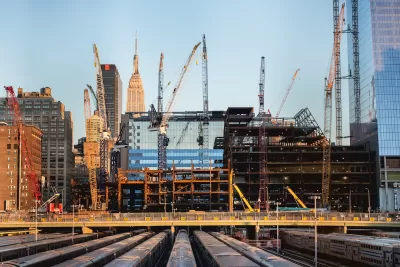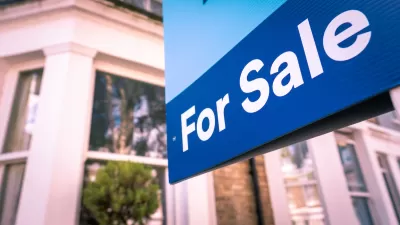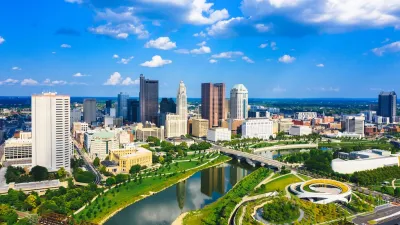Changes to tax incentives, fair housing laws, and housing assistance programs would quickly start impacting local efforts to stem the housing crisis.

In an interview with Curbed’s Kim Velsey, Matthew Murphy, executive director of New York University’s Furman Center, outlines how future federal policy could impact the housing crisis in New York City and around the country.
According to Murphy, “A lot of the housing policies we rely on today are either Republican-created or bipartisan. Housing vouchers are all about moving away from public housing and giving people choices.” Consequently, “The politics are actually in favor of not cutting Section 8.” However, Trump and Project 2025 authors have signaled the intent to tighten rules for federal housing programs to exclude households where non-citizens reside. The new administration could also cut funding to programs such as the Community Block Development Grant, which largely funds New York City’s code enforcement inspections.
For Murphy, the biggest potential impact will be changes to the tax code. “The last time they came up with opportunity zones that changed the way real estate could be invested in. There were also proposals to completely eliminate the low-income-housing-tax credit [which funds the construction and renovation of affordable rental housing].” Meanwhile, progress on fair housing could suffer if HUD stops making its resources available to enforce anti-discrimination laws.
And while a reduction in bureaucracy could be a good thing, Trump doesn’t appear poised to follow a small-government model. “It’s not like he’s embracing a libertarian vision of zoning, which is basically that we should abolish it and embrace market-based solutions,” Murphy says.
FULL STORY: ‘New York City Will Have to Defend a Lot of Programs We Rely On’

Manufactured Crisis: Losing the Nation’s Largest Source of Unsubsidized Affordable Housing
Manufactured housing communities have long been an affordable housing option for millions of people living in the U.S., but that affordability is disappearing rapidly. How did we get here?

Americans May Be Stuck — But Why?
Americans are moving a lot less than they once did, and that is a problem. While Yoni Applebaum, in his highly-publicized article Stuck, gets the reasons badly wrong, it's still important to ask: why are we moving so much less than before?

Using Old Oil and Gas Wells for Green Energy Storage
Penn State researchers have found that repurposing abandoned oil and gas wells for geothermal-assisted compressed-air energy storage can boost efficiency, reduce environmental risks, and support clean energy and job transitions.

Updating LA’s Tree Rules Could Bring More Shade to Underserved Neighborhoods
A new USC study finds that relaxing Los Angeles’ outdated tree planting guidelines could significantly expand urban tree canopy and reduce shade disparities in lower-income neighborhoods, though infrastructure investments are also needed.

California's Canal Solar Projects Aim to Conserve Resources and Expand Clean Energy
California’s Project Nexus has begun generating electricity from solar panels installed over irrigation canals, with researchers and state agencies exploring statewide expansion to conserve water and boost clean energy production.

HHS Staff Cuts Gut Energy Assistance Program
The full staff of a federal program that distributes heating and cooling assistance for low-income families was laid off, jeopardizing the program’s operations.
Urban Design for Planners 1: Software Tools
This six-course series explores essential urban design concepts using open source software and equips planners with the tools they need to participate fully in the urban design process.
Planning for Universal Design
Learn the tools for implementing Universal Design in planning regulations.
Heyer Gruel & Associates PA
City of Moreno Valley
Institute for Housing and Urban Development Studies (IHS)
City of Grandview
Harvard GSD Executive Education
Salt Lake City
NYU Wagner Graduate School of Public Service
City of Cambridge, Maryland





























